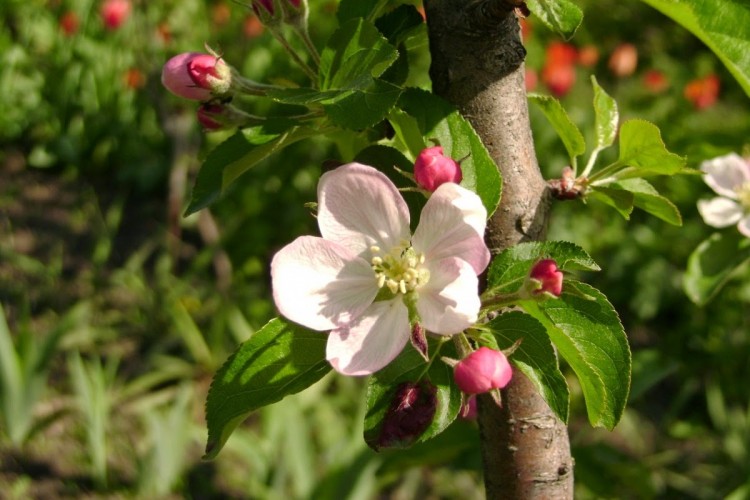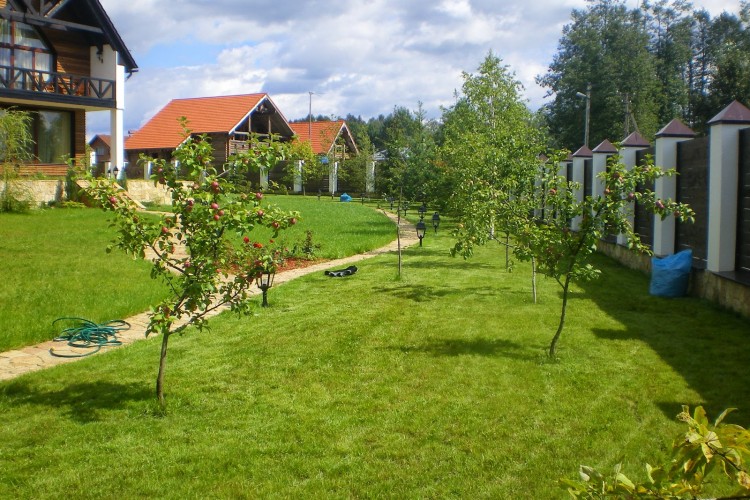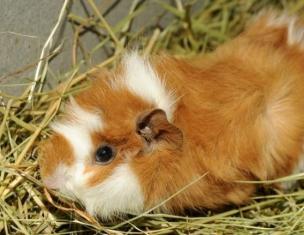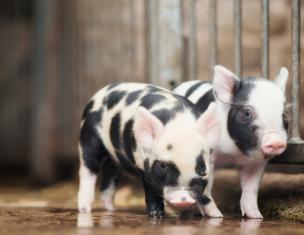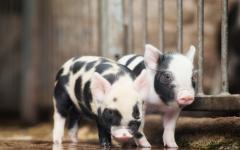Typically an orchard is local area, planted in a strict geometric order. Proportions and rationality reign here, but there is often no room for decorative details. Is it possible to combine aesthetic pleasure and practical benefits? What restrictions exist? How to transform the design of an orchard so that it is not only a source of healthy fruits and berries, but also a complete place for relaxation?
The main obstacles on the path to beauty and ways to overcome them
Indeed, fruit plantings have their own laws necessary for high yields. Trees require regular maintenance (whitewashing, spraying, pruning), which disrupts the aesthetic perception of the garden ensemble. Installing large design elements is inappropriate here, since access to each tree must be ensured. Most flowers feel uncomfortable in the shade of sloping branches. The need for watering and fertilizing also imposes its limitations.
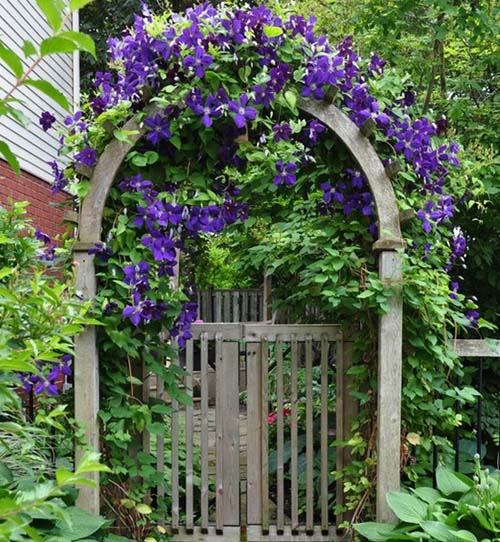
Arch to the garden entwined with clematis
However, if you wish, there is always a way to get around these obstacles. Alternatively, a fruitful garden can be separated by an elegant hedge, decorated with an arch, gate or opening. A picturesque entrance in itself can create a certain mood. Another way to decorate garden area– dilute its formal style decorative areas. In this case, it is worth considering which elements are most suitable for this purpose.
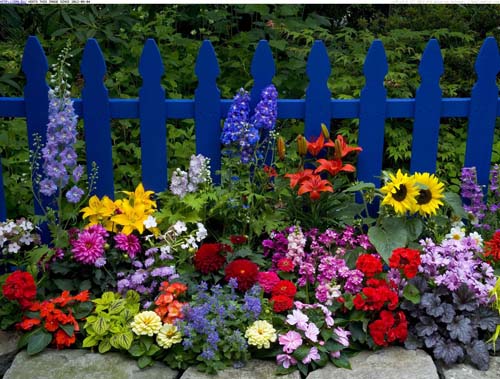
Mixborder near the garden fence
Decorative and applied elements of landscape art
From all the variety of techniques landscape design there are always a few optimal options, capable of transforming an orchard beyond recognition, without complicating the work in it at all. They can be divided into two groups: small-sized garden structures and utilitarian green compositions.
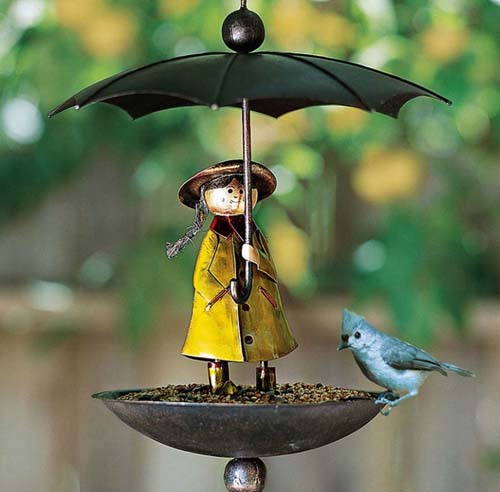
A practical decoration for a small garden - an original feeder
How to create a garden ornament using small architectural forms
Probably the most common attributes of a well-kept garden are alleys and paths. Their arrangement has not only design, but also practical benefits. The width of the objects directly depends on the size of the garden plot, and they can be made from anything: stone, cement, wood, brick, gravel and even bark. By playing with the shape and lines of the design, color, texture and rhythm of paving, you can get a complete garden composition that combines comfort and beauty.
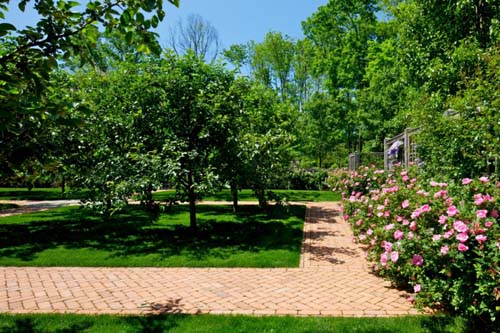
Garden alley from ceramic tiles along the perimeter of the garden
If there is no recreation area on the site yet, or it is located quite far away, you should definitely include a gazebo in the design of the orchard. Capital structures can impede the normal development of trees, so it is better to limit yourself to light structures made of steel rods, collapsible canopies, or just a cozy bench located so that it offers a beautiful view of the fruit-bearing garden.
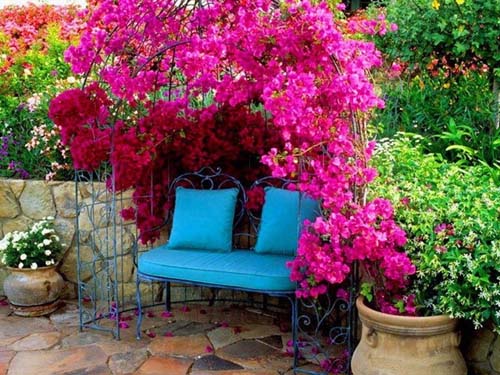
Cozy gazebo with landscaped surrounding area
Perhaps the territory of the garden plot is quite small, and there is no room for alleys and gazebos. In this case, you can improve it with the help of flowerpots with indoor flowers or bird feeders. Today landscape designers offer the most unexpected ideas for such devices, with the help of which an original place appears in the garden, attracting feathered orderlies.
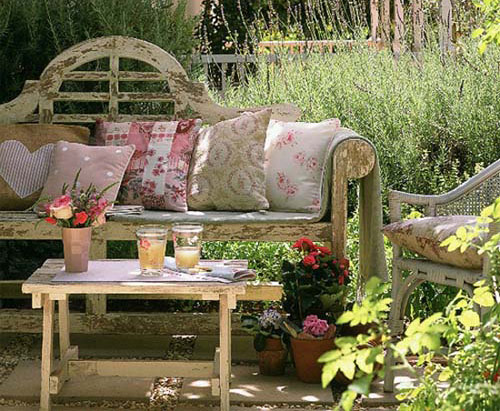
Lunch area for relaxation after work
How to decorate a garden with green spaces
In an effort to extract maximum benefit, when choosing an assortment of shrubs and trees, you should not limit yourself to their purely fruitful qualities. Many cultivated plants They are beautiful during the flowering period, which should be used for an additional decorative effect. Such shrubs, unusual in mid-latitudes, such as serviceberry, Japanese quince or dogwood, are distinguished not only by sweet fruits, but also by abundant, exquisite flowering, enriching the design of an orchard - photos confirm this fact.
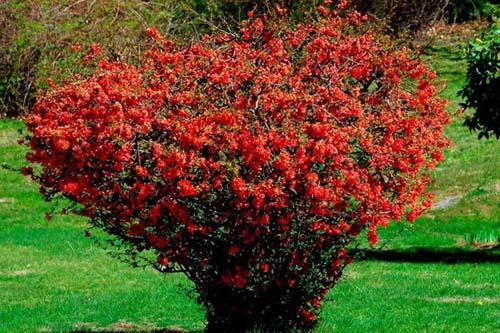
Spectacular beauty – Japanese quince
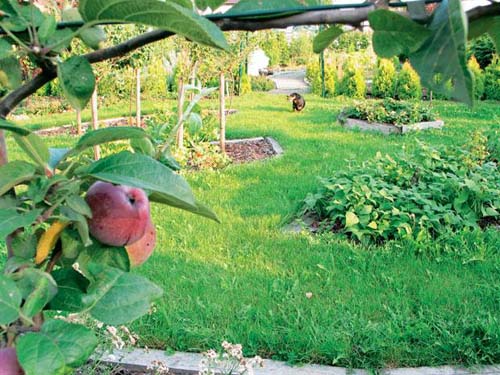
A green carpet decorates the orchard
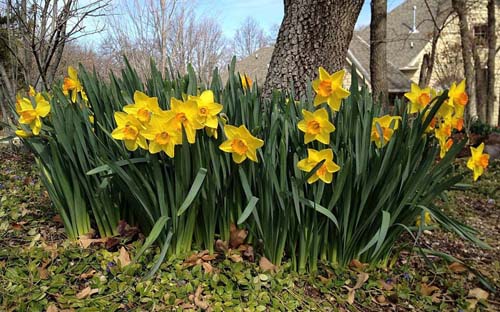
Daffodils near the tree trunk
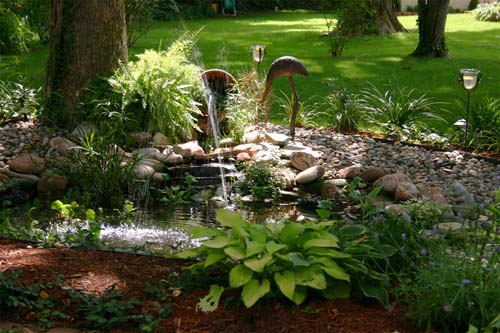
A small pond with a mini fountain in the garden
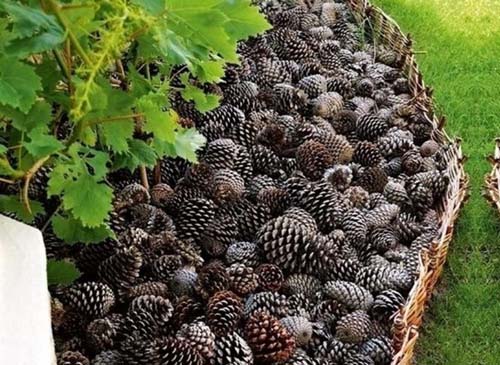
Cones in the tree trunk area simultaneously serve as mulch
A good background for strict rows of trees can be a shady lawn with grasses that are resistant to poor lighting: fescue, bluegrass, ryegrass, bentgrass. Grasses grow slowly in a shaded area, so such a lawn does not need frequent mowing. Another option for additional landscaping is a beautiful design of the tree trunk circle. Both bulbous annual flowers and available material that will not interfere with watering and fertilizing are suitable for this.
There is no need to be afraid of difficulties; even a small harvest will be a worthy reward for your efforts!
HOW PLANT A GARDEN CORRECTLY LOCATION ON
Having your own piece of land and planting something on it does not mean that something useful will grow on it and in sufficient quantity for the family. Of course, the trees will grow and they will bear fruit, but a garden is good when it produces a bountiful harvest of fruits and berries. Moreover, beautiful, full-fledged fruits, and not a few wrinkled apples.
Therefore, in order to properly set up a garden, you should not only plan it, equip land reclamation and water supply systems, but also think through a number of other issues:
1) the optimal number of fruit trees on the site;
2) what varieties to plant;
3) according to what scheme to plant trees.
Apple trees
Even during the planning period, it should be taken into account that approximately starting from the third harvest, one can judge how the tree bears fruit. Naturally, it is assumed that the garden will be properly cared for (watering, fertilizing, pest control). It is believed that for the average family (4 people) it is enough to have garden plot about 4 - 5 apple trees. It is meant that such a number of trees will fully meet the needs of all households not only for fresh fruit, but will also allow for conservation in a volume sufficient until the next harvest.
Depending on the variety of apple trees different time maturation. Therefore, they are divided into early (summer), middle (autumn) and late (winter). The owners themselves decide how many and what varieties of apple trees to plant in the garden. Naturally, if you have a good cellar, it is advisable to plant a larger number of winter varieties. If done correctly, they can lie until May - June of next year without losing their qualities. This way, there will always be fresh apples in the house, and you won’t have to buy beautiful-looking, but “suspicious” imported ones in stores.
Vigorous apple trees are planted, taking into account that the distance between the trees in the row is at least 2 m. The same distance is between the rows. The outermost row of apple trees should be separated from the fence (fence) according to this distance. However, there are apple trees that are called medium-sized and dwarf (low-growing). For them, this distance decreases. The advantage of such apple trees is that they begin to bear fruit earlier.
If the owners want to plant apple trees of different heights on their plot, then they need to think about ensuring that the taller varieties of apple trees do not subsequently shade the shorter ones. To do this, vigorous apple trees are planted in the northern part of the site. Further towards the south - medium-sized, then dwarf apple trees.
It must be taken into account that, unlike wild ones, a cultivated apple tree is self-sterile. That is, it is deprived of the ability to self-pollinate. She needs another “pollinator”. To do this, varieties of apple trees are selected on the site so that they can pollinate each other. For example, for Antonovka vulgaris (autumn-winter variety), pollinators can be Moscow pear, white filling and some others. There are special reference books and tables where you can find all the detailed information on this issue.
Pear trees are often planted in the same row with vigorous apple trees (see article “”). Specifically, with vigorous growth, since pear trees are quite tall.
Berry crops
The most popular among gardeners is strawberries, for which several beds are allocated. It should be taken into account that this crop requires abundant watering. Therefore, you need to provide nearby either a connection point for a watering hose (see the article “How to choose a watering hose”), or a water tap.
As for shrubs, raspberries, currants and gooseberries are planted in almost every area (see article “”). A gap of at least 1 m should be left between berry bushes. All of these crops bear fruit well in open areas. But there are also trees on the site (in the future) that provide shade. Berry bushes treat it differently. Currants (both red and white) are more hardy. Black currants and gooseberries “like the shade” less. Bushes are planted in the southern part of the site, usually closer to the fence. They are all low-growing (especially gooseberries) and will not shade the beds.
Wish you set up a garden correctly on your site!
See you!
Decor personal plot or cottages are hard to imagine without fruit trees. In order for the plantings to live for a long time and constantly bear fruit abundantly, it is necessary not only to know how to plant an orchard, but also to choose the right crops and varieties.
It is difficult to imagine that not a single fruit tree will grow in a country house or garden. Harvesting your own harvest is an incomparable pleasure, so the first priority of a summer resident is to learn how to plant an orchard.
Planning a personal plot, a summer house with an orchard
An orchard on a site can occupy a central place or be small. This largely depends on the area of the plot and the desires of the owners. In order for the garden to bring only benefit and pleasure in the future, before it is laid out, you need to draw up a planting plan and select suitable plants.
The area itself will tell you how to make a garden at your dacha. In the lowlands, trees will not survive the harsh winter, and in the spring they will suffer during flowering due to returning frosts. On a high hill, tender plants will get sick due to the winds. A southern or southwestern slope, well heated by the sun, is ideal for an orchard. Sensitive plants are planted in the center of the garden, and larger and more resistant plants are planted around the perimeter.
Laying out an orchard on the site
Before planting an orchard on a site, the soil is carefully cultivated and prepared. Trees are planted in a permanent place, so planting holes are dug large and filled generously with organic matter and long-acting mineral complex fertilizers.
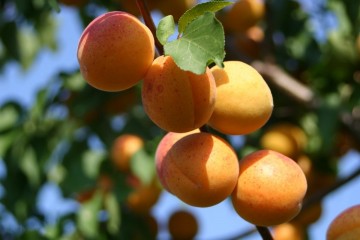
When planting, the roots of the trees are carefully distributed, and the plant itself is tied to a strong, deeply driven stake. It guarantees quick establishment of the plant, which will not sway in the wind. After planting, trunk circles are formed and the trees are watered abundantly. It is most rational to keep the garden under turf, leaving only the trunk circles clean, but in the first years, garden crops can be planted in the garden while the trees are still small.
Selecting suitable types of fruit trees for the garden
In a large garden you can turn around and plant whatever your heart desires. Being small imposes its own limitations. You need to choose only those breeds that are in demand in your family. Most often these are apple trees, pears, plums and cherries.
Be sure to read
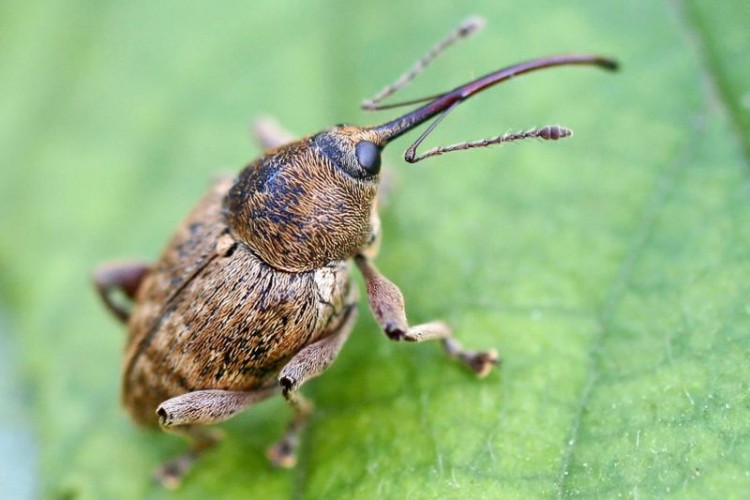
All these trees can be either tall or short. For small orchards in the country, it is better to take compact plants and plant them so that the crowns do not intertwine, shading each other.
Selection of fruit tree varieties
A personal plot, garden or cottage is not rubber and will not be able to accommodate all the variety of existing varieties. Preference should be given to plants that are suitable for climatic conditions and are least susceptible to diseases and pest attacks.
You need to choose varieties that your family loves, for example, sweet apples, not sour ones, and vice versa. It is enough to plant one or two trees with different fruiting periods, for use during the season and for winter storage.
How to make your garden easy to care for
To make working in the country and in the orchard in particular enjoyable, choose planting material wisely. Do not plant tall trees, they take up a lot of space, and birds will still pick the fruits from the tops for you. Do not thicken the plantings; the trees will become sick and bear little fruit.
